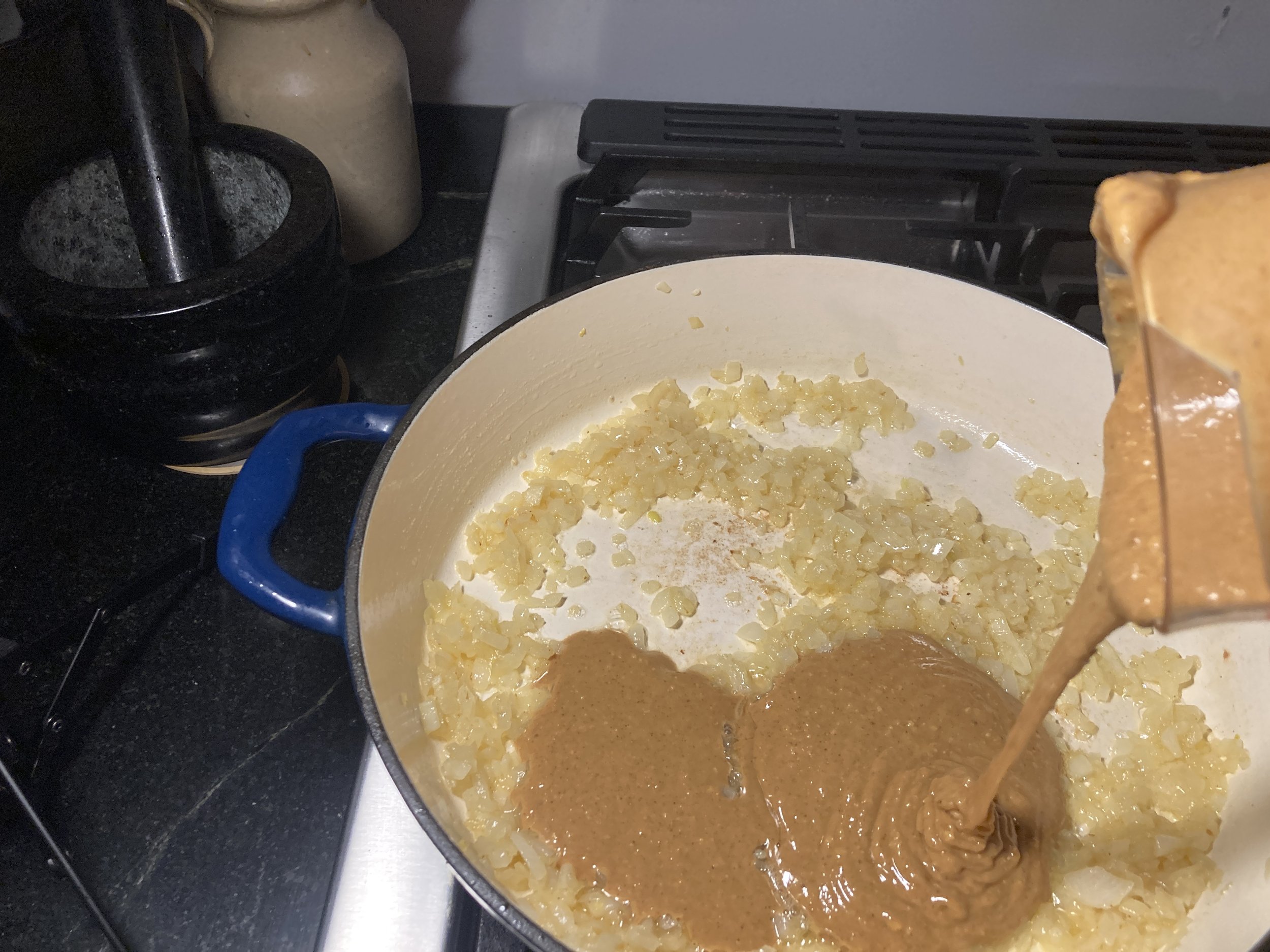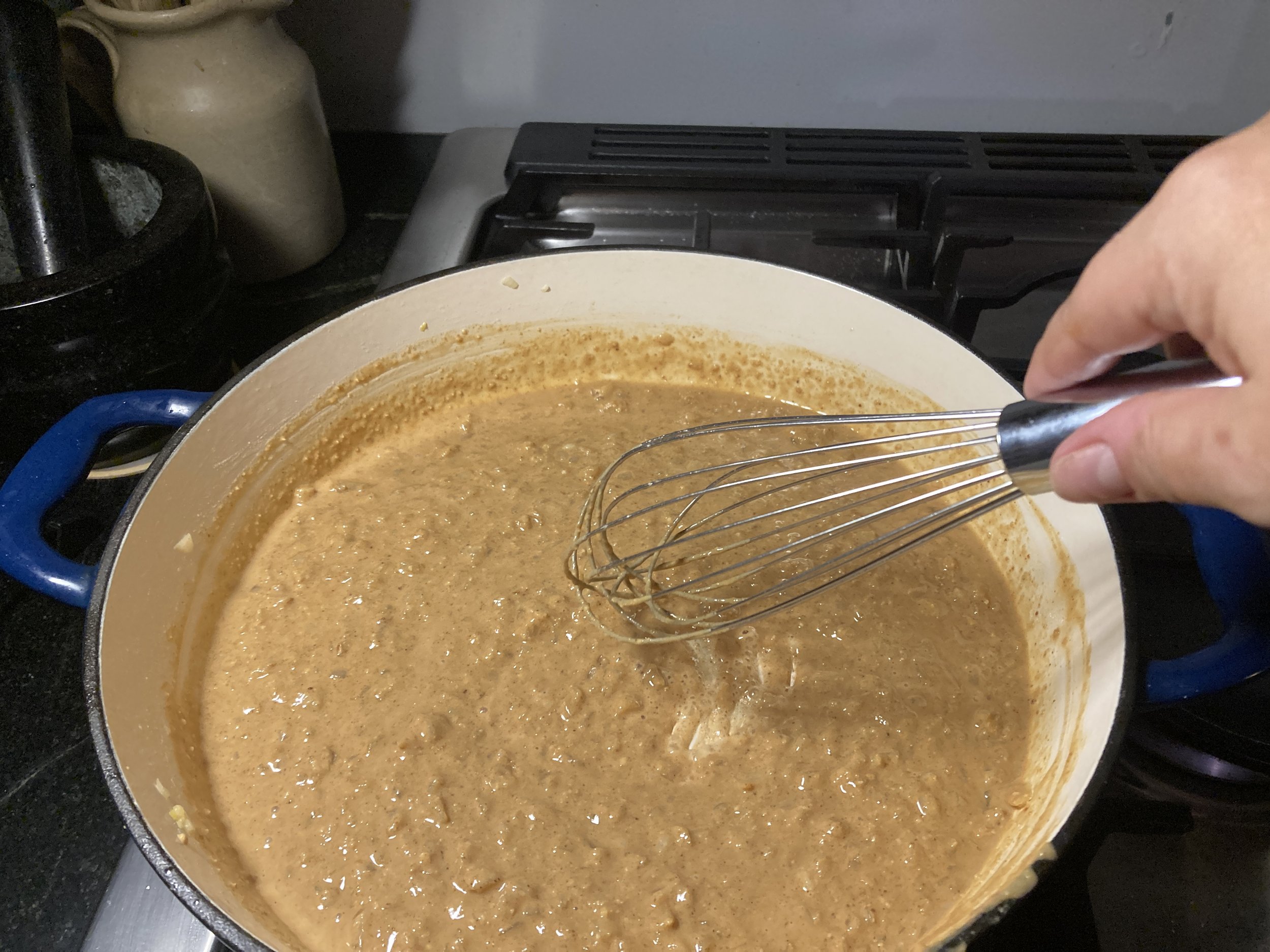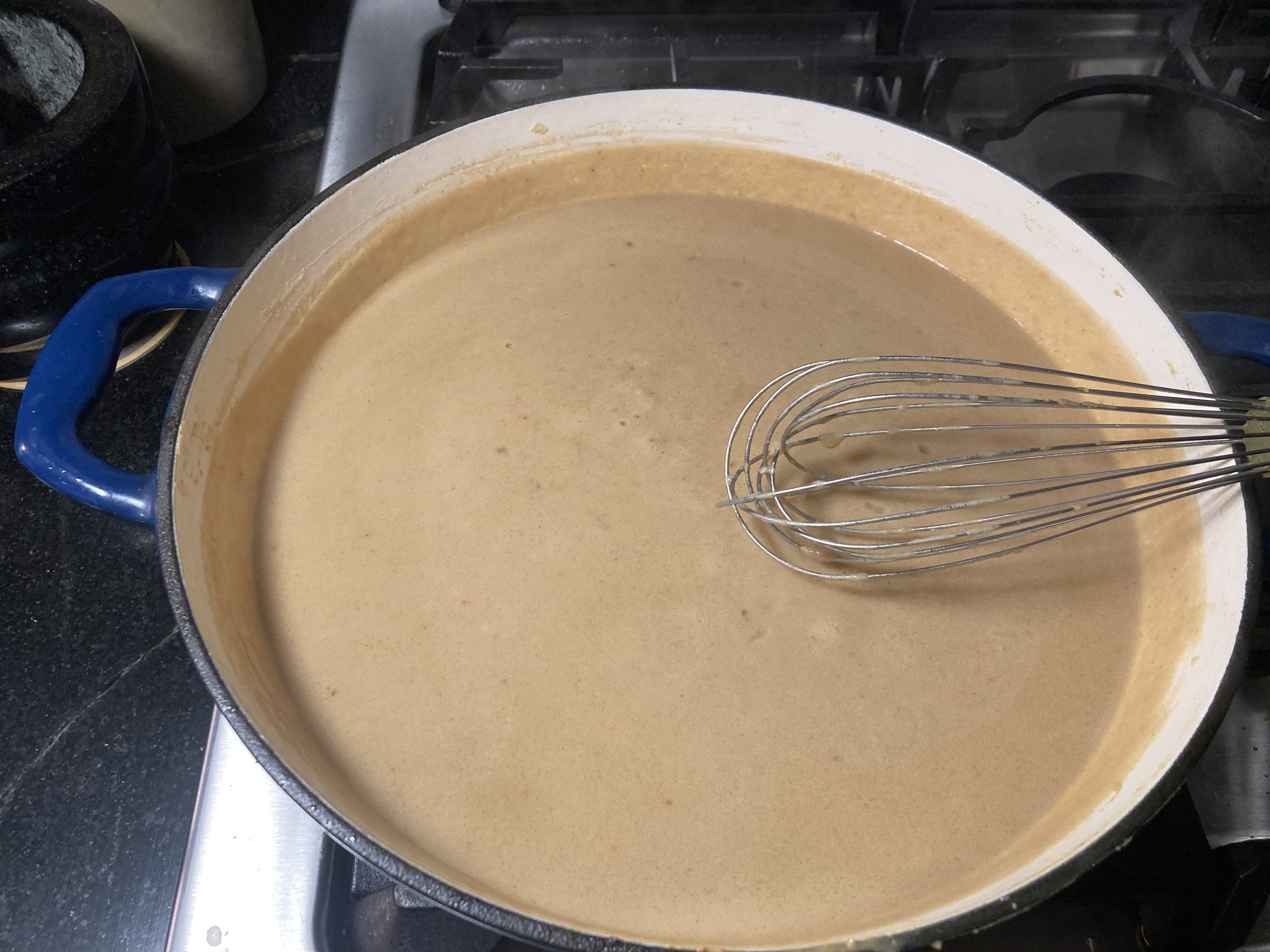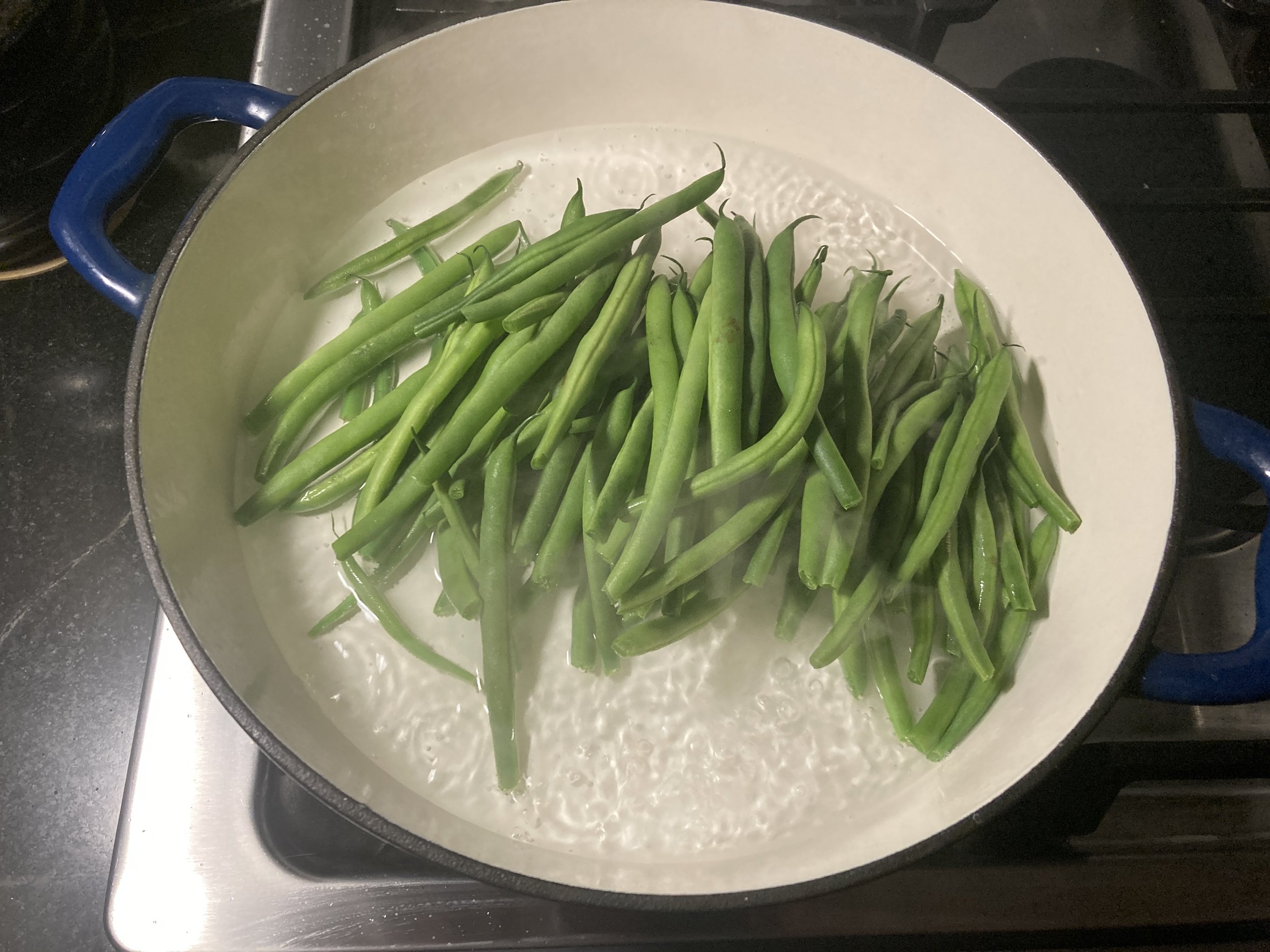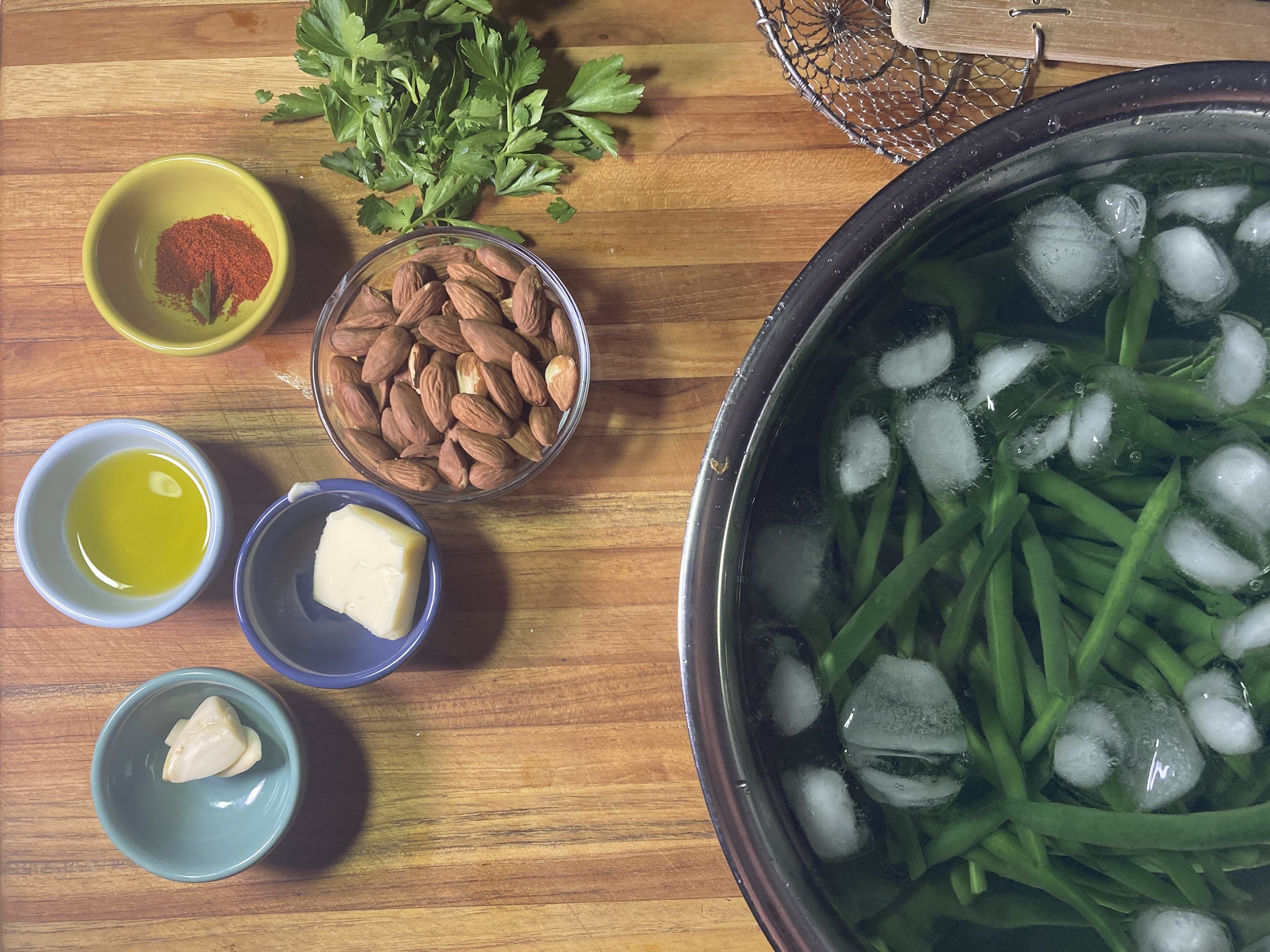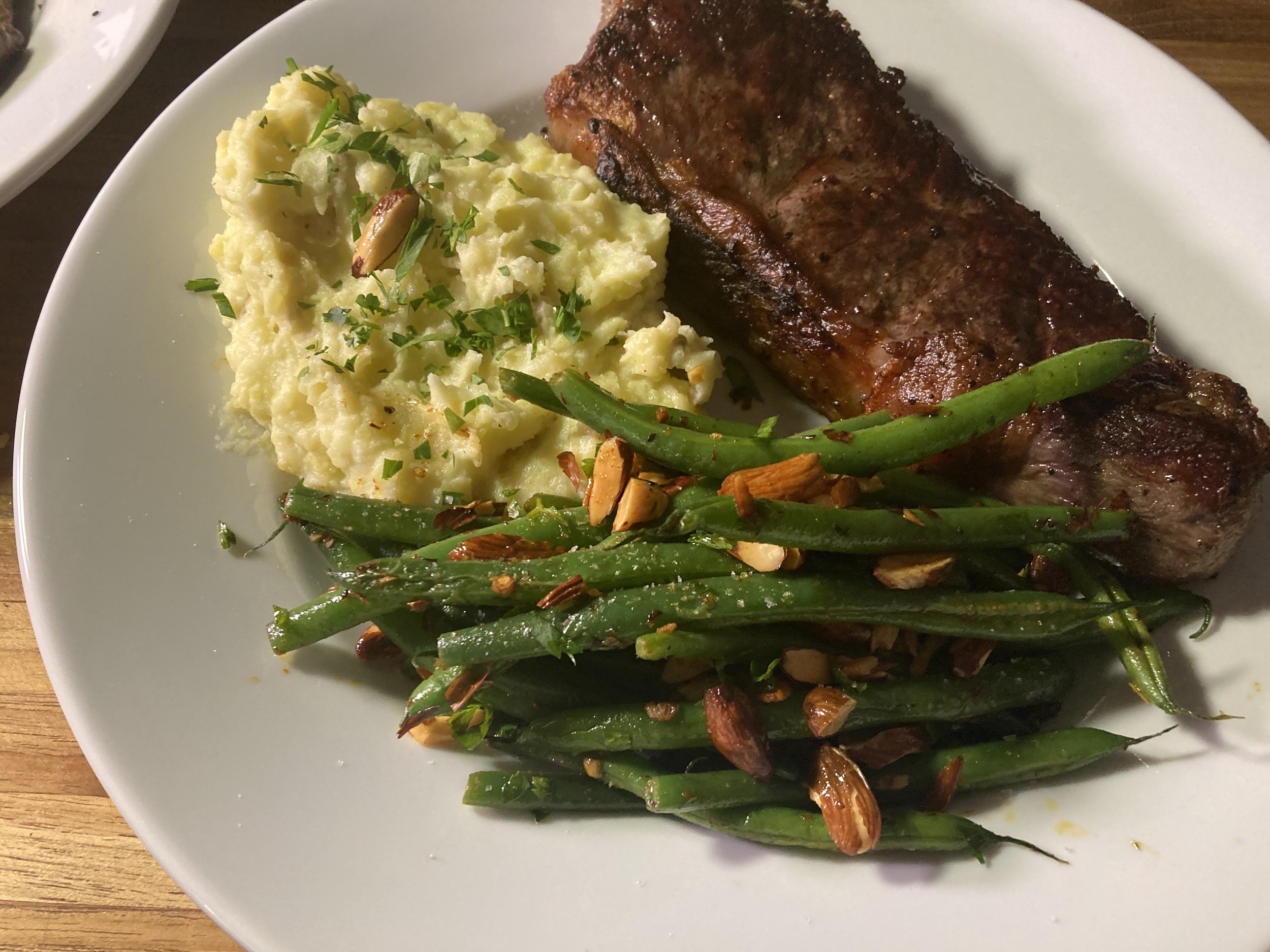
The Cookbook Project
Peanut Soup
from Jubilee by Toni Tipton-Martin…
…and The Great Green Wall, USAID, Kendrick Lamar’s Super Bowl performance, and how to call your Congresspeople.
I was going to just compose a photo essay juxtaposing stills of Kendrick Lamar’s Super Bowl performance with an 11 part post I found on Threads giving advice from a former Congressional staffer for how to make 6 calls a day to actually get heard by the Senators and Representatives that “represent” you.
It wasn’t coming together.
If you haven’t watched it yet tho…
Advice from a former staffer: get heard by making 6 calls a day
Posted to Threads by kayleetee07 02/02/2025
Advice from a former congressional staffer.
Call BOTH offices every day. Don’t write. A thread.
FOR THOSE OF YOU LOOKING TO TURN YOUR ANGER INTO ACTION, here’s some advice from a high-level staffer for a Senator. Re-posting from a friend of mine:
There are two things that we should be doing all the time right now, and they’re by far the most important things.
You should NOT be bothering with online petitions or emailing. 1/11
1) The best thing you can do to be heard and get your congressperson to pay attention is to have face-to-face time – if they have town halls, go to them. Go to their local offices. If you’re in DC, try to find a way to go to an event of theirs. Go to the “mobile offices” that their staff hold periodically (all these times are on each congressperson’s website). When you go, ask questions. A lot of them. Push for answers. The louder and more vocal and present you can be at those the better. 2/11
2) But those in-person events don’t happen every day. So, the absolute most important thing that people should be doing every day is calling.
YOU SHOULD MAKE 6 CALLS A DAY: 2 each )DC office & your local office) to your 2 Senators & your 1 Representative.
The staffer was very clear that any sort of online contact gets ignored & letters get thrown in the trash (unless you have a particularly strong emotional story – but even then it’s not worth the time it took you to craft that letter). 3/11
Calls are what all the congresspeople pat attention to. Every single day, the Senior Staff and the Senator get a report of the 3 most-called-about topics for that day at each of their offices (in DC and local offices), and exactly how many people said what about each of those topics 4/11
They’re also sorted by zip code and area code. She said that Republican callers generally outnumber Democrat caller 4-1, and when it’s a particular issue that single-issue-voters pay attention to (like gun control, or Planned Parenthood funding, etc…), it’s often closer to 11-1, and that’s recently pushed Republican congressmen on the fence to vote with the Republicans. In the last 8 years, Republicans have called, and Democrats haven’t. 5/11
So, when you call:
A) When calling the DC office, ask for the Staff member in charge of whatever you’re calling about (“He, I’d like to speak with the staffer in charge of Healthcare, please”) – local offices won’t always have specific ones, but they might. IF you get transferred to that person, awesome. If you don’t, that’s ok – ask for that person’s name, and then just keep talking to whoever answered the phone. 6/11
Don’t leave a message (unless the office doesn’t pick up at all – then you can – but it’s better to talk to the staffer who first answered than leave a message for the specific staffer in charge of your topic).
B) Give them your zip code. They won’t always ask for it, but make sure you give it to them, so they can mark it down. Extra points if you live in a zip code that traditionally votes for them, since they’ll want to make sure they get/keep your vote. 7/11
C) If you can make it personal, make it personal. “I voted for you in the last election and I’m worried/happy/whatever” or “I’m a teacher, and I am appalled by Betsy DVos,” or “as a single mother” or “as a white, middle class woman,” or whatever.
D) Pick 1-2 specific things per day to focus on. Don’t rattle off everything you’re concerned about – they’re figuring out what 1-2 topics to mark you down for on their lists. So focus on 1-2 per day. 8/11
Ideally something that will be voted on/ taken up in the next few days, but it doesn’t really matter—even if there’s not a vote coming up in the next week, call anyway. It’s important that they just keep getting calls.
E) Be clear on what you want – “I’m disappointed that the Senator…” or “I want to thank the Senator for their vote on…” or “I want the Senator to know that voting in ____ way is the wrong decision for our state because…” Don’t leave any ambiguity. 9/11
F) They may get to know your voice/ get sick of you – it doesn’t matter. The people answering the phones generally turn over every 6 weeks anyway, so even if they’re really sick of you, they’ll be gone in 6 weeks.
From experience since the election: If you hate being on the phone & feel awkward (which is a lot of people) don’t worry about it – there are a bunch of scripts (Indivisible has some, there are lots of others floating around these days) 10/11
After a few days of calling, it starts to feel a lot more natural.
Put the 6 numbers in your phone (all under P – Politician.) An example is McCaskill MO, politician McCaskill DS. Politician Blunt MO, etc., which makes it really easy to click down the list each day. 11/11
Thanks kayleetee07 and the anonymous friend/former staffer.
I’m still not getting a Threads account. I’ll see if I can find you over on BlueSky.
USAID and the Great Green Wall of Africa
Do you know about The Great Green Wall of Africa?
The Great Green Wall of Africa is a project begun in 2007 across eleven African nations to combat the encroachment and expansion of the Sahara desert into the Sahal, the region’s semi-arid transition zone between the desert to the north and the savannas to the south.
These lands have suffered from climate change, overfarming, overgrazing, and extreme temperatures. As The National Geographic explains, “Nowhere is this issue more urgent than in sub-Saharan Africa, where an estimated 500 million people live on land undergoing desertification, the most extreme form of land degradation.”
Source: Schleeter, Ryan. “The Great Green Wall.” The National Geographic, Education Resources, 2023. https://education.nationalgeographic.org/resource/great-green-wall/
The goal is to interplant trees, grasses, shrubs and crops to restore 100 million hectares of land, creating jobs, teaching sustainable land practices for improved water usage, partnering with small family farms, tribes, and indigenous land stewards to build permaculture systems into an area that is slowly being lost to desertification.
These forests will also absorb CO2 to help combat climate change, ensure greater agricultural self-sufficiency, food security, and income opportunities across the continent, as well as improved biodiversity.
And the goal is to do this on lands that have been depleted for more than a generation, on lands that have been abandoned as unproductive for over 40 years in places.
Permaculture garden designer and Oregon State University Instructor Andrew Millison has an incredible video about this, actually a whole series of videos. Here’s “How The UN Is Holding Back The Sahara Desert.”
It’s a patchwork of thousands of mini food forests being installed in cooperation with local farmers and land stewards to create a fertile band across the continent. Bit by bit, the dry, cracked, depleted hydrophobic soil is slowly being planted in half circles and terraced rows that function as water capturing structures, utilizing natural slopes, holding and utilizing the water that falls there in the rainy season. All of the following images are from Andrew Millison’s video.
Biomass trenches, early stages.
Biomass trenches and half moons, planting begun.
Biomass trenches create compost rich soil with nitrogen-fixing tees and decaying plant matter to provide nutrients for future food crops
From above, a food forest in early stages
Digging in the half moons
Also called bunds, these half-moons are typically 5m across and situated to take advantage of natural slopes to collect rainwater.
Seriously, just watch the video. And if you’re a gardener, subscribe. But here Millison draws and describes the long term planting goals and how syntropic agriculture works to provide a sustainable system. In the early stages these half moon pits and biomass trenches are planted with grasses, nitrogen-fixing trees and plants that will eventually create a tree canopy, fruit trees for long-term food production, and other native species to first rejuvenate the soil thereby making it more fertile for heavier feeding food-producing crops to be planted later.
And then there’s teaching, training, and bringing jobs back into the region, bringing green jobs to young people who move to big cities for opportunities, or to local farmers who migrate away from the region during the dry season for work. In places where the dry season can last up to 9 months, locals turn to jobs as agricultural laborers in places like Spain to pay for food to be sent back home to their families in Africa.
And the thing is, not to put too fine a point on it or anything, but a combination of a lack of food and a lack of money to buy food means people go hungry and starve, and disease flourishes, and spreads. Also animals starve, both livestock and like giraffes and shit. And I don’t know, maybe you’re into that kind of thing. I don’t know what you’re into.
Once completed, The Great Green Wall of Africa would be the largest living structure on the planet. It’s funded by The World Bank, the African Development Bank, the European Union, the Green Climate Fund, the Government of France.
And, yes, the US has pledged something like 14 billion between 2021-2025. Or I should maybe say had.
Here’s what USAID’s resources about The Great Green Wall say now:
So I guess we don’t want to be a part of any of that anymore. Sigh.
Let’s make some fucking soup I guess, yeah?
Peanut Soup from Jubilee
(in photos — scroll down for recipe)
Gather your ingredients. Place that mise.
Chop your onion. That’s it, you’re ready to cook.
Melt butter in pot or skillet over medium heat.
Once butter is melted, add your onion and saute until soft, about three minutes.
Stir until soft and translucent.
Sprinkle in flour and whisk to combine, about 30 seconds.
Add peanut butter.
Stir until soft and melted.
Add stock and stir to combine.
Simmer 20 minutes over very low heat.
Add heavy cream.
Stir to combine and warm through until soup temperature.
Put that soup in a bowl
Drizzle a bit of olive oil over the top
Drizzle with hot sauce and chili crisp and a bit of crushed peanut.
Eat that soup. Hug your loved ones. Update your LinkedIn profile. Keep Doom Scrolling.
Peanut Soup
adapted from Jubilee by Toni Tipton-Martin
I say don’t skimp on the chili sauce called for here. It doesn’t need to be spicy, but you at least the acidity. Even better, if you have some Chili Crisp, it’s great! I had some Don Chilio Jalapeno Chili Crisp. Really wonderful.
Leftovers are also great thickened a bit more and served as a sauce with rice and some scallions.
4 Tablespoons (1/2 stick) butter
1/2 cup minced onion
1 teaspoon minced garlic (1-2 cloves)
1 Tablespoon all-purpose flour
1 cup natural peanut butter (unsweetened)
1 quart Chicken Stock (I use Better Than Bouillon)
1 cup heavy whipping cream
salt and black pepper
Hot pepper sauce
Chili Crisp!
Crushed roasted peanuts (for garnish)
In a medium saucepan or deep skillet, heat the butter over medium heat until sizzling. Add the onion and garlic, and stir until translucent and soft, but not browned. Sprinkle the flour over this and dmix together with a whisk for about 30 seconds. Mix in the peanut butter and stir with your whisk until softened and smooth.
Gradually whisk in your stock/ broth, and and bring to a very gentle simmer. Lower your temp to a very gentle simmer for 20 minutes, stirring occasionally, and modifying the heat if needed.
Slowly stir in the cream and gradually heat through until soup is soup temperature. Don’t try to speed this step up or you might cause the fats to separate. Season to taste with salt and plenty of black pepper, to taste. Add dashes of hot sauce and some sprinklings of chili crisp to the top. Add a sprinkling of crushed peanuts on top as well.
Ok today imma make some calls, I guess. Maybe tomorrow.
Green Beans Amandine
Adapted from Jubilee by Toni Tipton-Martin
But first, some musings…
There’s this tallish Dutch fella named Carel Struycken. You may have seen his work in spherical panoramas. A spherical panorama is a photograph that allows the viewer to see a vantage point with full 360 degree vertical and horizontal view. Imagine the most magnificent view you’ve ever seen, that space you tried to capture in photographs, but they only flattened that which your eyes pivoting around you and from the ground to the sky could embrace as grand. The sunsets you took on your iPhone that never looked worth sending. All those snaps you grabbed of the Grand Canyon that could be shown only with the disclaimer that you have to see it for yourself.
Well the spherical panorama captures what you see if you spin all around in a circle, recording as you go, as well as from your feet to the sky and back around the other way, the whole image visible and made able to spin in a dizzying array, as if the space you view could be projected onto the inside of a giant snow globe, with the viewer placed at the center of your experience, gyroscopically spinning endlessly, directing and redirecting where their eyes fall, spinning all the while in your experience as they go.
Here's Struycken’s spherical panorama of the Sheets-Goldstein house.
You may know the house as Jackie Treehorn’s from The Big Lebowski.
Here’s one of the Canyon de Chelly. Move your cursor skyward and remember the lazy afternoons of childhood lying on your back, gazing at the sky, and feeling the rotation of the earth in the movement of the clouds.
On his website, Struycken describes his fascination with spherical panoramas:
“Normally, the photographer decides what part of a scene will be viewed. To a large extent, this point of view represents the art and craft of the photographer. In spherical panoramas, it is up to the viewer to decide what to focus on and it becomes the task of the photographer to offer up something interesting, no matter where the viewer decides to look. When successful, it becomes an immersive experience, an act of seduction even” (https://www.sphericalpanoramas.com/about/).
Imagine the host of human experience then, but only ever seeing one small part of it. The 360 degree panorama is there, but you are permitted only one small isolated part, constrained and limited to that view. I imagine it would feel like a prison. Now imagine it’s not external forces, but rather a choice. The spherical panorama is available, but you, the viewer, choose to see only one section. Why would you do that, do you think?
Anyway, the metaphor is starting to get away from me, and I told myself I’d write today. We’re isolated in information silos is the point, because we choose to limit our access to the entire human experience, and a few years ago I would have said that’s a bad thing, and it’s a big reason we’re in the mess we are, but when faced this morning with a YouTube news feed of the news of the world (of injunctions over treasury data, and the pillaging of USAID, and the threatened Rivierafication of Gaza, and an incoming report from PC Gamer about how CAPTCHA has always been a for-profit tracking cookie to make Google money), or videos of a tiny rescued miniature horse having an even tinier miniature baby horse, I chose the horse. Because the spherical panorama of tragedy and chaos is hard to look at right now. And I think it is for most of us. I need to find a spot on the sphere, and hold myself there, for fear of spinning off the globe entirely.
If you don’t know Carel Struycken from his work on spherical panoramas, you may know him from his work on Twin Peaks as The Giant, or The Addams Family movies as Lurch, or as Mr. Homn, the manservant of Deanna Troy’s mother on Star Trek: TNG. Or that dude that hung out with the I Heart NY Pug in Men in Black. Perhaps my describing him as a tall fella was an understatement. Carel Struycken is 7 feet tall. And on January 7 he and his wife Tracey lost their home of 12 years to the Eaton fire.
The fires are concrete, real tragedies, not metaphors at all, of course. But sometimes when the panoramic sphere of an event is overwhelming, it helps to focus on one smaller frame. So imagine you’re a 78 year-old, 7 foot-tall man, and your home burns down with all of your very specific clothes in it. Imagine you’ve lost your film equipment for your very specific art of taking spherical panoramas. Imagine your memorabilia of your very specific film career went up with your home. And then imagine the director that you worked with in maybe your most iconic role dies a week later.
So what’s the point?
We miss a lot of the breadth of human experience when we draw a little box around what we see, and silo our experience inside of that. But when the big picture is overwhelming, we draw the box to connect--not to shut out feeling, but to enable it. That compassion fatigue we heard so much about during the pandemic is always a risk. And allowing compassion fatigue to creep in means turning away from what is hard to watch, and toward, yes, more videos of miniature horses, but it’s also a way of shutting out the range of human emotions when we feel overwhelmed by tragedy. I’m finding that I function better when I don’t allow the miniature horses to take me. Rather I try to find a small frame of the panorama to focus on, and to feel something about. This week, that was Carel Struycken. He and his family are safe. And many more people are not.
Green Beans Amandine
Adapted from Jubilee by Toni Tipton-Martin
This recipe is really loose. Amp up the garlic and paprika if you like, add some chili flakes, or replace lemon zest with a squeeze of lemon. Or leave it out entirely (it’s not in Tipton-Martin’s recipe; I added it). Just a simple green bean side preparation.
Ingredients
1 – 1 ½ lb green beans, ends trimmed
2-3 cups water heavily salted water
1 Tablespoon olive oil
1 Tablespoon butter
3 garlic cloves, crushed
½ teaspoon smoked paprika
½ cup almonds, slivered traditionally, but sliced, or chopped will work
½ teaspoon lemon zest
1 Tablespoon chopped parsley
Directions
Over medium heat, in a dry pan, toast your almonds until fragrant and slightly tanned. Be careful not to burn!
Remove almonds and set aside. Clean out your pan.
Fill a large bowl with ice water, and set aside.
Add salted water to a skillet or pan large enough to hold all of your green beans over high heat. When boiling, add your green beans, and blanche for 3-4 minutes.
Then remove from pan and place in ice bath. When cold, drain and set aside until ready to cook, in the fridge if it’s going to be while.
Recipe can be done ahead until this point. The rest of this goes fast, so preferably complete right before serving.
Dry out your pan. Put back over medium heat, add olive oil and butter. When bubbling, add garlic and stir for 30 seconds.
Add green beans, paprika, lemon zest, and more salt and pepper to taste. Toss for about 2 minutes, or until done to your liking.
paprika, salt, and pepper in pan
Remove to serving bowl, and top with almonds, and parsley. I add a little drizzle of additional olive oil as well.
Super simple side that can be completed while a meat is resting.
Have a week, and try to hold it together.
Finding it too overwhelming to look at the whole spherical panorama of human suffering right now? Maybe find one real person who’s been hit especially hard by it, and tap into your ability to empathize again. Or, if you’re struggling the other way, overwhelmed by too much connecting, take that break for miniature horses. I know we’ve all heard it. But…
It is happening again.
Carl Struycken in Twin Peaks
Citation:
Tipton-Martin, Toni. Jubilee: Recipes from Two Centuries of African American Cooking. Clarkson-Potter, 2019.


















